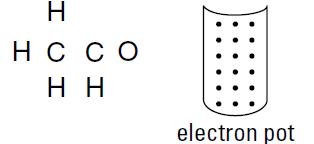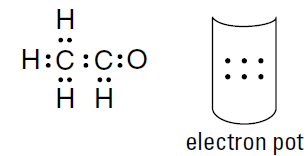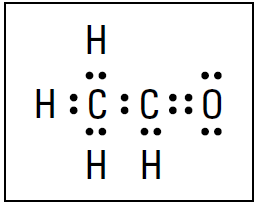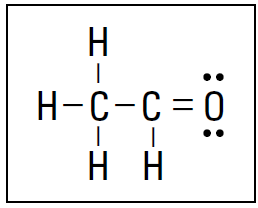

علم الكيمياء

تاريخ الكيمياء والعلماء المشاهير

التحاضير والتجارب الكيميائية

المخاطر والوقاية في الكيمياء

اخرى

مقالات متنوعة في علم الكيمياء

كيمياء عامة


الكيمياء التحليلية

مواضيع عامة في الكيمياء التحليلية

التحليل النوعي والكمي

التحليل الآلي (الطيفي)

طرق الفصل والتنقية


الكيمياء الحياتية

مواضيع عامة في الكيمياء الحياتية

الكاربوهيدرات

الاحماض الامينية والبروتينات

الانزيمات

الدهون

الاحماض النووية

الفيتامينات والمرافقات الانزيمية

الهرمونات


الكيمياء العضوية

مواضيع عامة في الكيمياء العضوية

الهايدروكاربونات

المركبات الوسطية وميكانيكيات التفاعلات العضوية

التشخيص العضوي

تجارب وتفاعلات في الكيمياء العضوية


الكيمياء الفيزيائية

مواضيع عامة في الكيمياء الفيزيائية

الكيمياء الحرارية

حركية التفاعلات الكيميائية

الكيمياء الكهربائية


الكيمياء اللاعضوية

مواضيع عامة في الكيمياء اللاعضوية

الجدول الدوري وخواص العناصر

نظريات التآصر الكيميائي

كيمياء العناصر الانتقالية ومركباتها المعقدة


مواضيع اخرى في الكيمياء

كيمياء النانو

الكيمياء السريرية

الكيمياء الطبية والدوائية

كيمياء الاغذية والنواتج الطبيعية

الكيمياء الجنائية


الكيمياء الصناعية

البترو كيمياويات

الكيمياء الخضراء

كيمياء البيئة

كيمياء البوليمرات

مواضيع عامة في الكيمياء الصناعية

الكيمياء الاشعاعية والنووية
Double bonds: Writing structural formulas for C2H4O
المؤلف:
John T. Moore, EdD
المصدر:
Chemistry Essentials For Dummies
الجزء والصفحة:
p 79
4-1-2017
2552
Double bonds: Writing structural formulas for C2H4O
Drawing the structural formula for a molecule that contains a double or triple bond can be a bit tricky. In those cases, your equations may tell you that you have more covalent bonds that you know what to do with. For example, here’s an example of a structural formula that’s a little more complicated C2H4O. The compound has the following framework:

Notice that it has not one but two central atoms — the two carbon atoms. You can put 18 valence electrons into the electron pot: four for each carbon atom, one for each hydrogen atom, and six for the oxygen atom.
Now apply the N – A = S equation:
✓ N = 2(8) + 4(2) + 8 = 32 (two carbon atoms with eight
valence electrons each, plus four hydrogen atoms with two valence electrons each, plus an oxygen atom with eight valence electrons)
✓ A = 2(4) + 4(1) + 6 = 18 (four electrons for each of the two carbon atoms, plus one electron for each of the four hydrogen atoms, plus six electrons for the oxygen atom)
✓ S = 32 – 18 = 14, and S ÷ 2 = 14 ÷ 2 = 7 covalent bonds
Put single bonds between the carbon atoms and the hydrogen atoms, between the two carbon atoms, and between the carbon atom and oxygen atom. That’s six of your seven bonds.

There’s only one place that the seventh bond can go, and that’s between the carbon atom and the oxygen atom. It can’t be between a carbon atom and a hydrogen atom, because that would overfill hydrogen’s valence energy level. And it can’t be between the two carbon atoms, because that would give the carbon on the left ten electrons instead of eight. So there must be a double bond between the carbon atom and the oxygen atom. The four remaining electrons in the pot must be distributed around the oxygen atom, because all the other atoms have reached their octet. Figure 1.1 shows the electrondot formula.

Figure 1.1: Electron-dot formula of C2H4O.

Figure 1.2: The Lewis formula for C2H4O.
 الاكثر قراءة في مواضيع عامة في الكيمياء اللاعضوية
الاكثر قراءة في مواضيع عامة في الكيمياء اللاعضوية
 اخر الاخبار
اخر الاخبار
اخبار العتبة العباسية المقدسة

الآخبار الصحية















 قسم الشؤون الفكرية يصدر كتاباً يوثق تاريخ السدانة في العتبة العباسية المقدسة
قسم الشؤون الفكرية يصدر كتاباً يوثق تاريخ السدانة في العتبة العباسية المقدسة "المهمة".. إصدار قصصي يوثّق القصص الفائزة في مسابقة فتوى الدفاع المقدسة للقصة القصيرة
"المهمة".. إصدار قصصي يوثّق القصص الفائزة في مسابقة فتوى الدفاع المقدسة للقصة القصيرة (نوافذ).. إصدار أدبي يوثق القصص الفائزة في مسابقة الإمام العسكري (عليه السلام)
(نوافذ).. إصدار أدبي يوثق القصص الفائزة في مسابقة الإمام العسكري (عليه السلام)


















